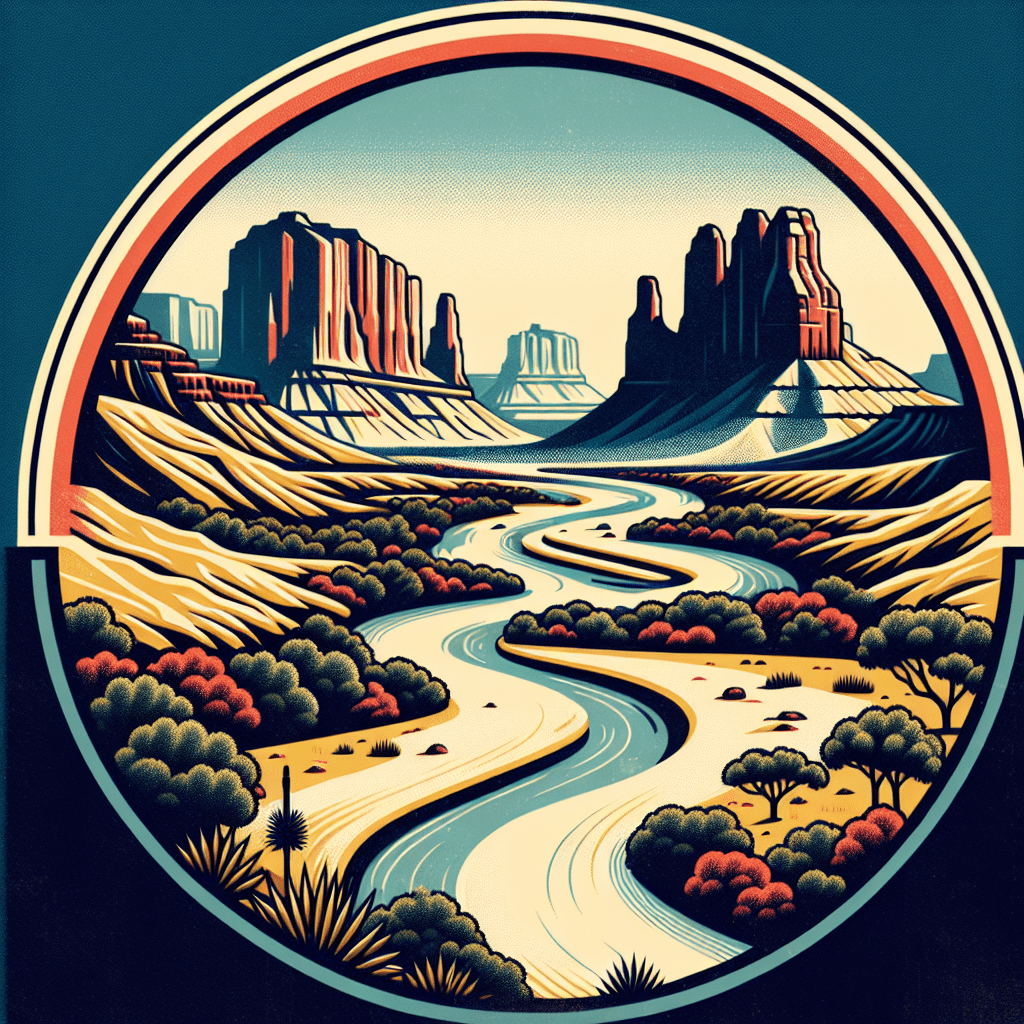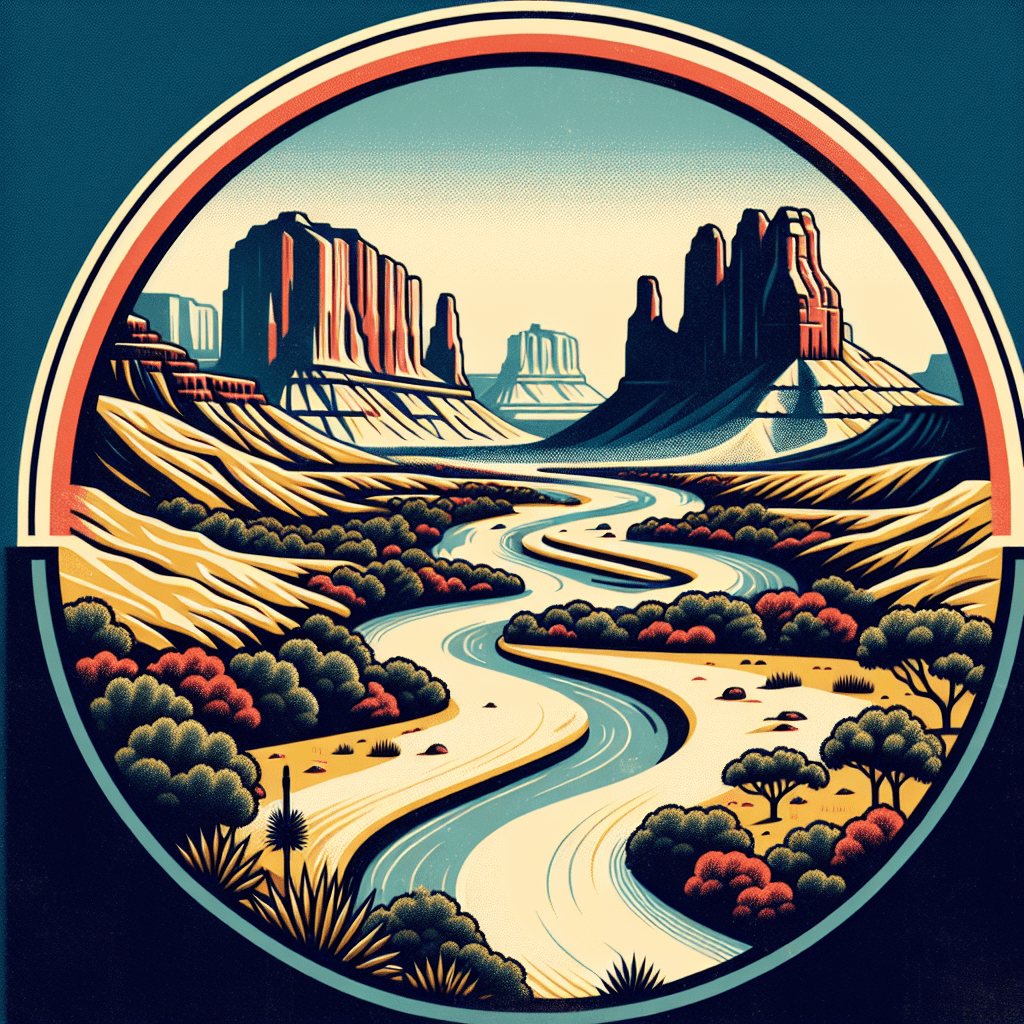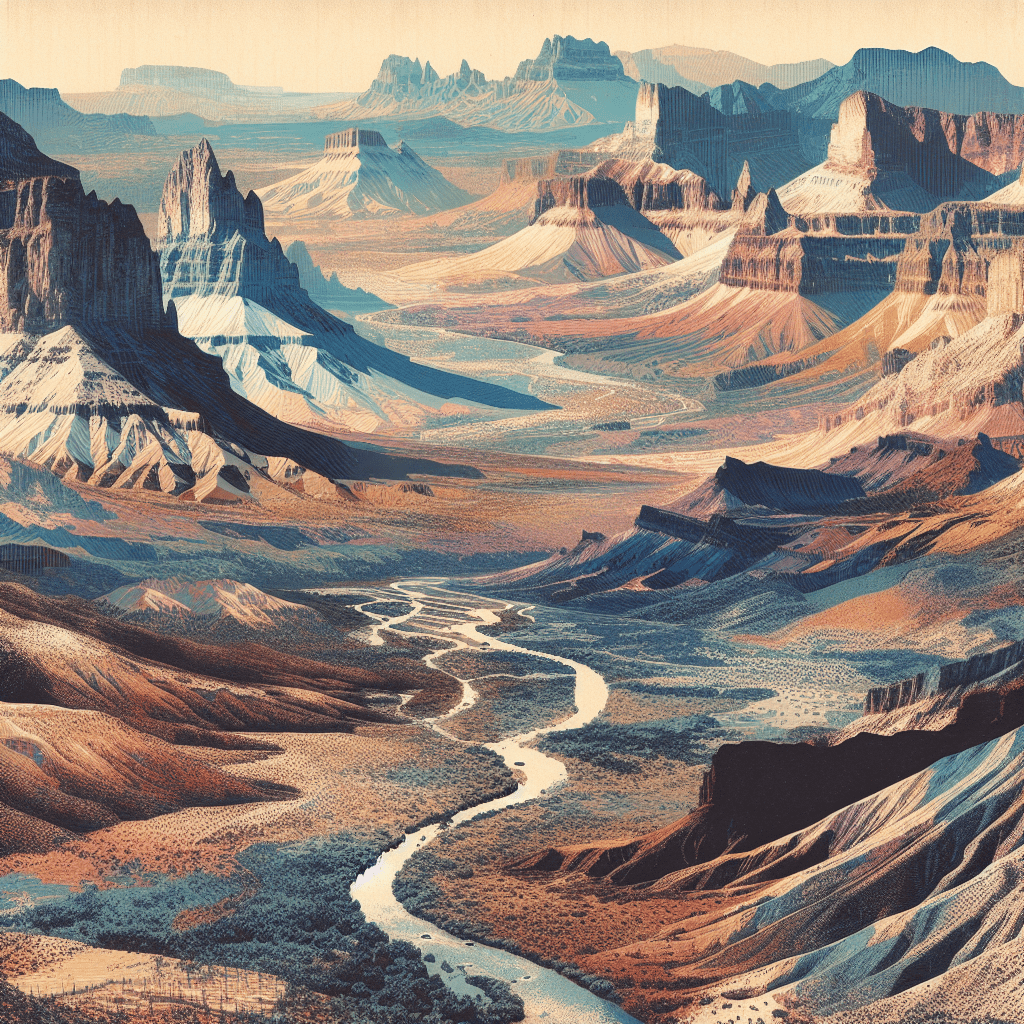
Located in the vast and beautiful state of Texas, Big Bend National Park sprawls across an impressive 801,163 acres, offering breathtaking landscapes, diverse wildlife, and an extraordinary sense of tranquility. Nestled in the bend of the Rio Grande River, this awe-inspiring national park is a hidden gem that begs to be explored. With its remote location and limited light pollution, Big Bend National Park provides visitors with unparalleled stargazing opportunities, making it a true haven for nature enthusiasts and adventure seekers. So, if you’re wondering where to find this natural masterpiece, look no further than Big Bend National Park.

Overview
Big Bend National Park is a stunning natural wonder located in the southwestern part of Texas. Covering over 800,000 acres, it is one of the largest national parks in the United States. With its breathtaking landscapes, diverse wildlife, and endless recreational opportunities, Big Bend National Park is a must-visit destination for nature enthusiasts and outdoor adventurers alike.
About Big Bend National Park
Big Bend National Park takes its name from the sharp turn in the Rio Grande River, which forms a large bend around the park. Established in 1944, the park is renowned for its geological features, including the Chisos Mountains, the Rio Grande River, and the Santa Elena Canyon. The park is also home to a rich variety of plant and animal life, making it a haven for nature lovers.
Size and Geography
Spanning over 800,000 acres, Big Bend National Park is a vast and diverse landscape. Its terrain is characterized by rugged mountains, vast desert expanses, and deep canyons. The Chisos Mountains, located in the park’s center, provide a stunning backdrop, as well as opportunities for hiking and wildlife viewing. The Rio Grande River winds its way through the park, forming the border between the United States and Mexico. The Santa Elena Canyon is a notable feature, with towering cliffs that offer impressive views and recreational opportunities.
Location
State
Big Bend National Park is situated within the state of Texas. It is located in the southwestern part of the state, near the border with Mexico. The park is approximately 300 miles west of San Antonio and 400 miles southeast of El Paso.
County
The park is primarily located within Brewster County, the largest county in Texas. Brewster County encompasses a vast area, with Big Bend National Park being one of its most prized natural treasures.
Access
Getting to Big Bend National Park
There are various ways to access Big Bend National Park, depending on your starting point. If traveling by air, the closest major airports are located in Midland/Odessa, about 200 miles north of the park, or El Paso, approximately 300 miles west. From either airport, you can rent a car and drive to the park.
If you prefer driving, the park is accessible via several major highways. Highway 385 leads directly to Big Bend National Park from the north. From the east, Highway 90 provides access to the park. Additionally, Highway 118 from Alpine allows for entry into the park from the west.
Transportation Options
Once you arrive at Big Bend National Park, the most convenient way to get around and explore the park is by car. The park has a network of scenic drives that provide access to its various attractions, including the Chisos Basin and the Rio Grande Village. It is important to note that there is limited cell phone service within the park, so it is advisable to plan your routes and carry a map.
Nearby Cities
Marfa
Situated approximately 70 miles northwest of Big Bend National Park, the charming town of Marfa is worth a visit. Known for its unique art installations and trendy vibe, Marfa offers a range of galleries, shops, and eateries. Visitors can also enjoy the breathtaking desert landscapes and stunning sunsets that surround the town.
Alpine
Located about 80 miles northeast of Big Bend National Park, Alpine is a small but vibrant city with a rich cultural heritage. The city is home to Sul Ross State University, which houses a museum showcasing the area’s history and culture. Alpine also boasts a variety of restaurants, shops, and art galleries, making it a pleasant stopover on the way to or from the park.
Terlingua
Neighboring Big Bend National Park to the west is the ghost town of Terlingua. Once a booming mining town, Terlingua is now a quirky and eclectic community that attracts artists, musicians, and nature enthusiasts. Visitors can explore the town’s historic buildings, enjoy live music performances, or soak in the stunning desert scenery that surrounds the area.

Climate
Temperature
Big Bend National Park experiences a desert climate, with hot summers and mild winters. During the summer months, temperatures can soar well above 100°F, so it is essential to pack and dress accordingly. Winters are generally mild, with daytime temperatures ranging from the 60s to 70s°F. However, it is important to note that temperatures can drop significantly at night, so layering clothing is advisable.
Precipitation
The park receives minimal rainfall throughout the year, typically averaging around 10 inches annually. Most rainfall occurs during the summer months, but it is still relatively low compared to other regions. It is advisable to carry plenty of water and stay hydrated, especially when engaging in outdoor activities.
Seasonal Changes
Big Bend National Park experiences distinct seasonal changes, with each season offering its own unique charm. Spring and fall are generally the most comfortable seasons to visit, with mild temperatures and relatively low visitation. Springtime brings an explosion of wildflowers, creating a vibrant and colorful landscape. Fall showcases stunning foliage in the Chisos Mountains, casting beautiful hues of red, orange, and yellow. Summers can be challenging due to the intense heat, while winters offer cooler temperatures and fewer crowds.
Flora and Fauna
Plant Life
Big Bend National Park is home to a remarkable variety of plant species, adapted to the harsh desert environment. The park showcases diverse ecosystems, including desert scrublands, grasslands, and riparian areas along the Rio Grande River. Visitors can observe unique plants such as ocotillo, prickly pear cactus, yucca, and diverse wildflowers.
Animal Life
The park is a sanctuary for a wide array of animal species, many of which are specially adapted to survive in the arid desert conditions. Popular sightings include roadrunners, javelinas, coyotes, bobcats, and numerous bird species. Lucky visitors may even catch a glimpse of more elusive creatures such as mountain lions, black bears, or golden eagles. It is important to respect the park’s wildlife and observe animals from a safe distance.
Attractions
Chisos Mountains
The Chisos Mountains, situated in the heart of Big Bend National Park, offer a breathtaking escape from the desert plains. With their rugged peaks and lush forests, the Chisos Mountains provide a refreshing change of scenery. Hiking trails abound, leading visitors to stunning vistas and hidden canyons. The Window, a natural stone arch framing a scenic view of the desert below, is a must-visit attraction within the Chisos Mountains.
Rio Grande River
The Rio Grande River forms the southern boundary of Big Bend National Park, separating the United States from Mexico. The river is integral to the park’s ecosystem and offers a range of recreational opportunities. Visitors can take guided river tours, go canoeing or kayaking, or simply relax by the banks and take in the peaceful flow of the water. The Rio Grande is also an important habitat for various bird species, providing ample opportunities for birdwatching.
Santa Elena Canyon
One of the most spectacular natural wonders in Big Bend National Park is the Santa Elena Canyon. Carved over millions of years by the Rio Grande River, the canyon boasts towering limestone cliffs that reach heights of over 1,000 feet. Visitors can hike along the riverbank or take a guided rafting tour through the canyon, marveling at the sheer beauty and immensity of the rock formations.
Activities
Hiking
Big Bend National Park offers an extensive network of hiking trails that cater to all levels of experience. From gentle walks along the river to challenging treks up the Chisos Mountains, there is something for everyone. Popular hikes include the Lost Mine Trail, the Santa Elena Canyon Overlook Trail, and the Window Trail. It is crucial to be well-prepared, carry plenty of water, wear appropriate footwear, and follow park regulations to ensure a safe and enjoyable hiking experience.
Camping
Camping is a popular activity at Big Bend National Park, allowing visitors to immerse themselves fully in the natural beauty of the park. The park offers several developed campgrounds with varying amenities, including flush toilets and potable water. There are also options for backcountry camping, allowing for a more secluded and adventurous experience. It is important to obtain a permit and familiarize oneself with park rules and regulations before embarking on a camping trip.
River Rafting
The Rio Grande River presents a fantastic opportunity for river rafting enthusiasts. Guided tours are available, providing a thrilling and scenic experience through the river’s canyons. Whether navigating gentle rapids or floating peacefully along the water, river rafting offers a unique perspective on the park’s landscape and an opportunity to witness wildlife up close.
Bird Watching
With its diverse range of habitats, Big Bend National Park is a haven for birdwatchers. Over 450 species of birds have been spotted within the park, including rare and migratory species. Birdwatching hotspots include the Rio Grande Village, where water sources attract a concentration of birdlife, and the Chisos Basin, with its lush forests and mountainous terrain. Binoculars, a field guide, and a keen eye are essential for spotting and identifying the many feathered inhabitants of the park.
Visitor Centers
Panther Junction
Panther Junction serves as the main visitor center for Big Bend National Park. Here, visitors can obtain maps, information about hiking trails, and updates on current park conditions. Educational exhibits and interactive displays provide a deeper understanding of the park’s geology, flora, and fauna. Park rangers are available to answer questions and offer guidance on planning an unforgettable visit to Big Bend.
Chisos Basin Visitor Center
Nestled high in the Chisos Mountains, the Chisos Basin Visitor Center offers stunning panoramic views and a wealth of information about the park’s mountainous regions. The center features exhibits on the unique ecosystems found within the mountains, as well as information about hiking and camping in the area. Visitors can also browse the gift shop for souvenirs and educational materials.
Castolon Visitor Center
Located near the western entrance of the park, the Castolon Visitor Center provides insight into the park’s rich cultural history. Exhibits detail the area’s Native American heritage, the mining era, and the development of the park. Park rangers are available to answer questions and provide advice on exploring the park’s western attractions. A bookstore and gift shop offer a selection of books, maps, and gifts.
Accommodation and Camping
Lodges
For those seeking a more comfortable stay, Big Bend National Park offers the Chisos Mountains Lodge, situated in the heart of the park. The lodge provides cozy accommodations, including rustic cabins and motel rooms, along with dining options and a gift shop. The lodge is popular, so it is advisable to make reservations well in advance.
Camping Options
Big Bend National Park offers a range of camping options to suit different preferences. Developed campgrounds, such as the Chisos Basin and Rio Grande Village campgrounds, provide amenities such as restrooms and drinking water. These campgrounds often fill up quickly, especially during peak seasons, so making reservations is recommended. Backcountry camping is also available for those seeking a more remote and secluded experience. Permits and knowledge of backcountry regulations are necessary to ensure a safe and enjoyable camping trip.
In conclusion, Big Bend National Park is a majestic and diverse landscape that offers endless opportunities for exploration and adventure. From the rugged peaks of the Chisos Mountains to the tranquil flow of the Rio Grande River, the park is a true natural gem. Whether hiking through desert canyons, camping under star-lit skies, or simply enjoying the breathtaking scenery, Big Bend National Park promises an unforgettable experience for all who visit.